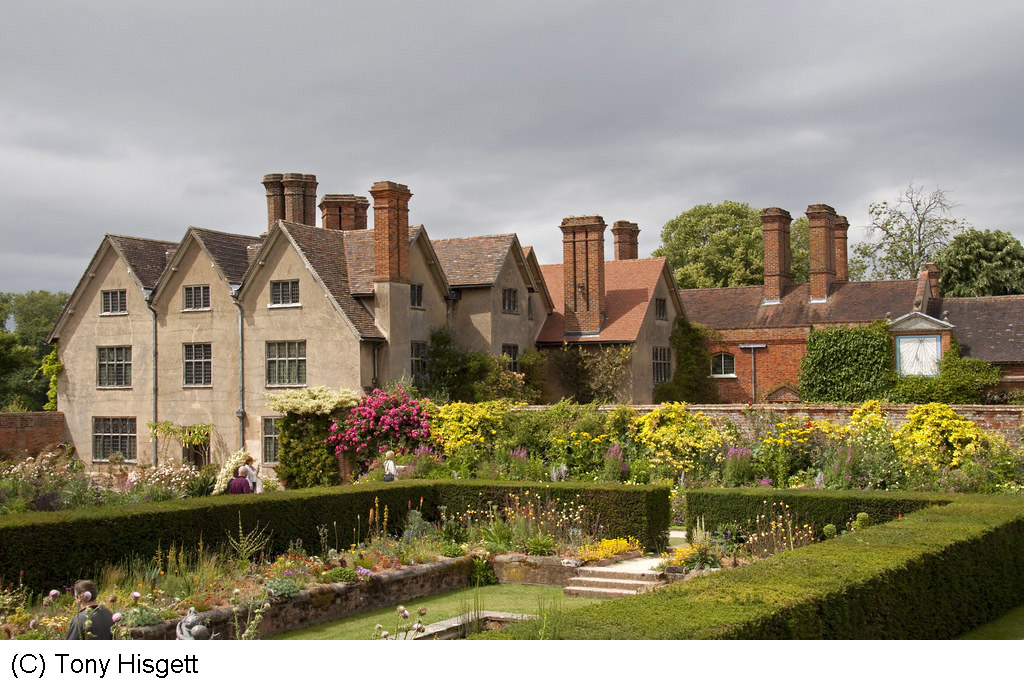 In Tudor times, Packwood was owned by the Fetherstons, who were yeoman farmers. By 1700’s they had expanded the estate to almost 700 acres and had become very wealthy.
In Tudor times, Packwood was owned by the Fetherstons, who were yeoman farmers. By 1700’s they had expanded the estate to almost 700 acres and had become very wealthy.
In 1520, John Fetherston laid out the gardens with deep borders and created a yew garden with ‘four tall yews (the four evangelists) and six more yews either side (the 12 apostles.) Over the following 100 years, many more yews were planted to represent the ‘multitude’ and the garden became known as ‘The Sermon on the Mount’.
In 1570, William Fetherston used his wealth to build a “new and magnificent house with separate brick barn to the north”. The house stood four square, with three brick gables and half-timbered external walls. Eventually, the succession passed through the female line to the Leighs then the Dilkes who “modernised” the Tudor home, replacing the original windows with sash windows and rendering the half-timbered walls. Many other internal features were also lost and the building no longer reflected its ancestry.
Between 1860 and 1901, Packwood was owned by George Oaks Arton and in 1901 Country Life declared it to be in a “poor, neglected condition”, but gave positive comments on the gardens.
In 1904 the wealthy Midlands Industrialist, Alfred Ash purchased the Packwood estate (now only 134 acres) for his son, Graham Baron Ash, and a new era began. Father and son began a complete renovation of the house, but the father was ostentatious whilst the son, Baron, as he preferred to be called, sought the style of a refined country gentleman.
By 1935, Baron had cut all ties with his family and devoted his life to restoring the house to reclaim its Tudor heritage. He desired the house to have a “Great Hall as in Tudor times, for feasting and dancing” and converted the brick cow barn into a perfect dancing space, complete with a minstrels’ gallery. He also connected the Great Hall to the house by building the Long Gallery to display paintings and furniture.
Such was the scale of his works that Queen Mary solicited an invitation. Apparently, the visit went well and the room in which she rested was renamed in her honour. The (washed!) cup and saucer she used can still be seen in its glass case.
Baron’s work continued and he meticulously purchased hundreds of items, planning each room as he felt would reflect the Tudor style. In June 1941 Baron Ash gave Packwood, its contents, park and gardens and £30,000 (about £1.54 million in today’s money) to the National Trust in memory of his parents. In his memorandum of wishes, he stated “no addition shall be made to the furniture…but the furniture and effects placed in position and handed over by me shall be kept in the position in which I placed them”.
In other words, today we can see, not an authentic Tudor House, but one reflecting the Tudor-inspired dreams, desires and hard work of Baron Ash.
– Polli Appleyard
